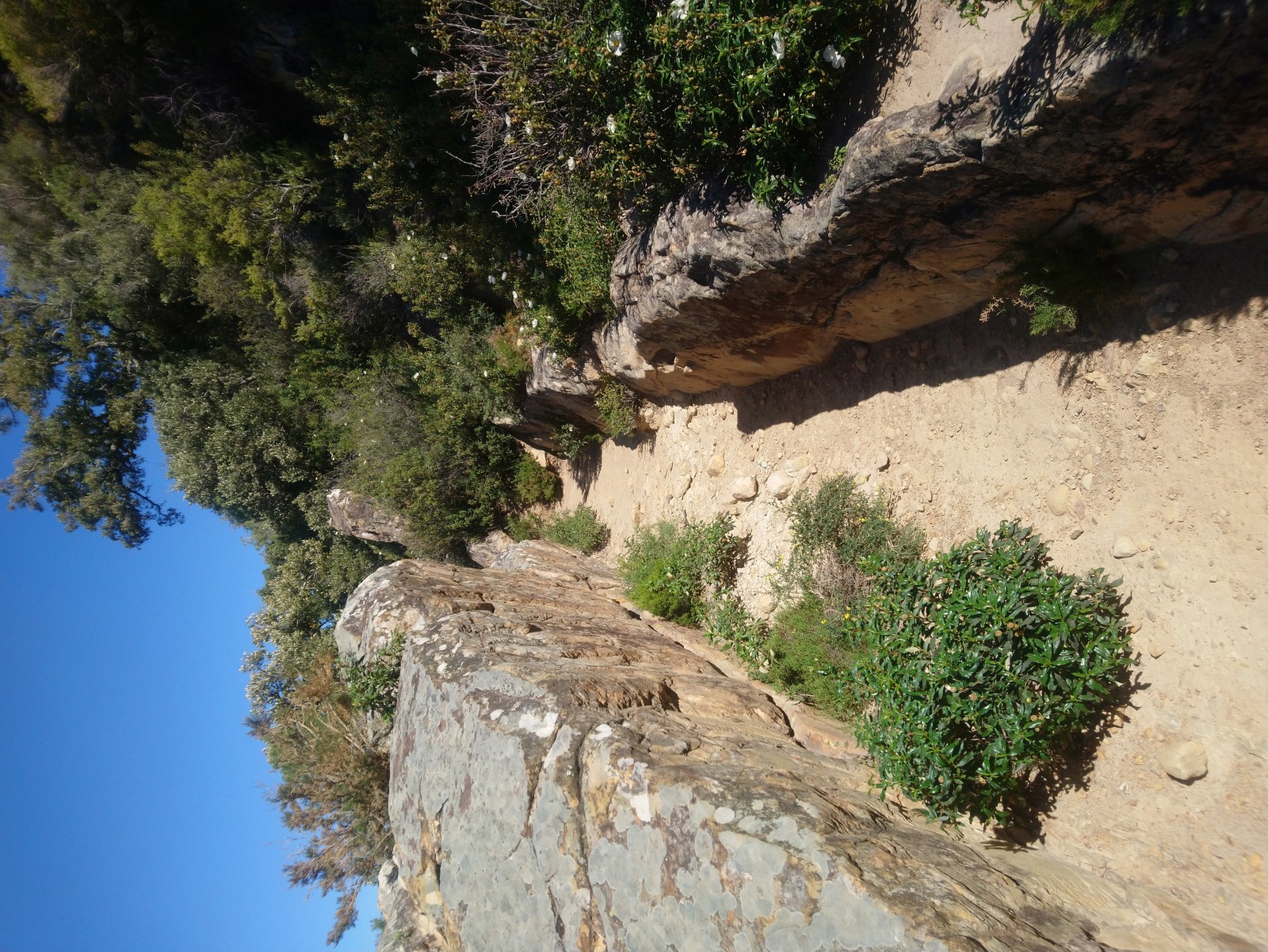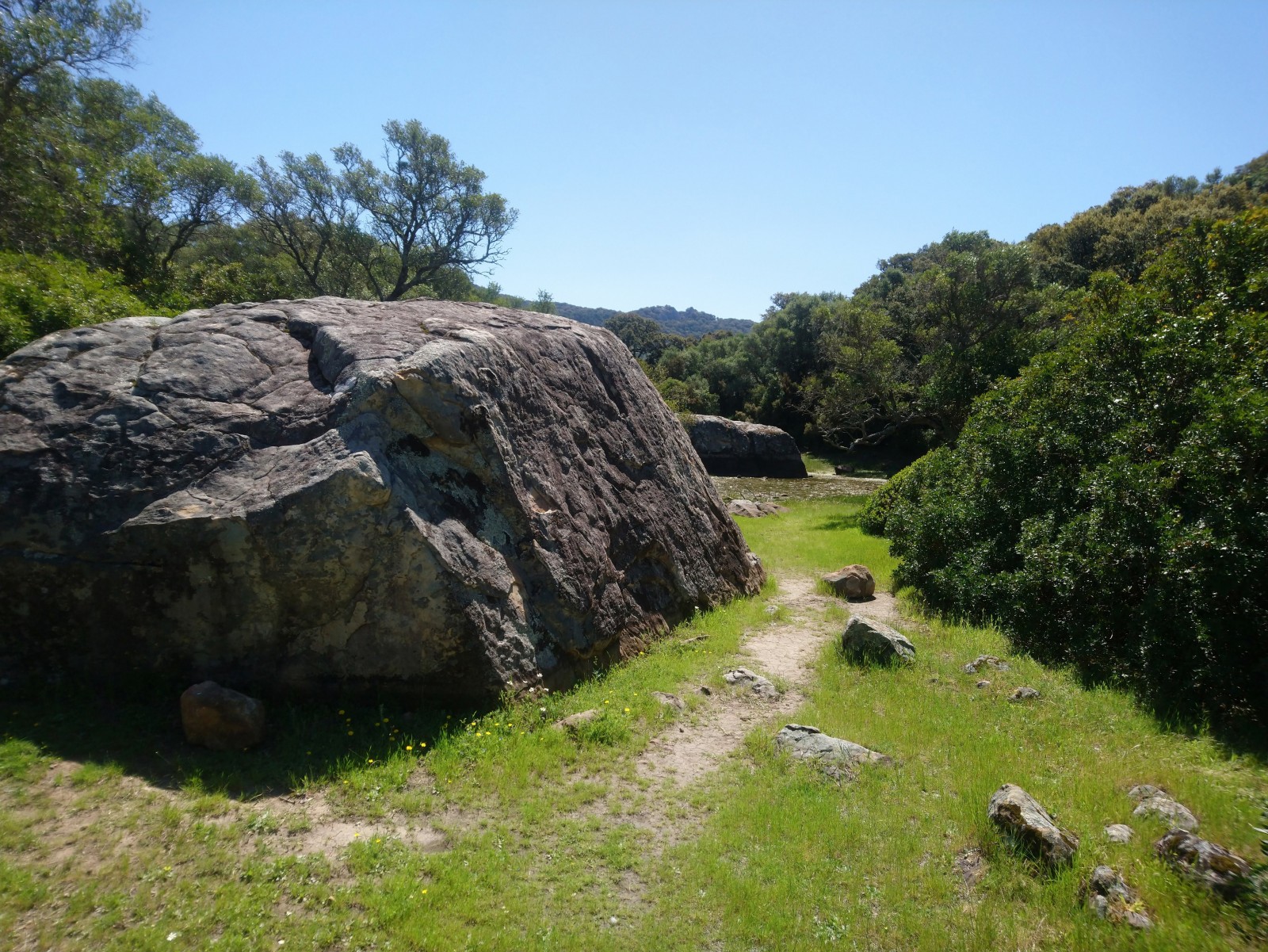Descripción
This route, near Alcala de los Gazules, offers convenient access off the main A 381 road into the woodlands and hills of the Alcornocales Natural park. The town itself has a large colony of Cernícalo Primilla in good numbers of which can be seen hawking over the town, particularly in the morning and evening, from February onwards. Despite what some guides tell you small numbers of this charsimatic falcon remain through the winter. Those hoping to photograph or just get better views of this iconic species are advised to head up towards the church and ruined casle at the top of the hill (best on foot as the route by car is narrow and tortuous). The valley itself is an excellent place to look for raptors and woodland birds but also attracts passing migrants which funnel through the area in spring and autumn.
Leave the road around the village at a sharp bend to head down the valley (signposted 'Camping Gazules'). As you do so keep a sharp look out in Spring and summer for Collalba Rubia, a declining species that is often found perching on the fences here. As you continue the Molinos valley opens out before you giving good views of fields and the low wooded mountains beyond. The latter have large breeding colonies and roosting sites for Buitre Leonado so it's not unusual to see dozens of these birds lazily soaring on thermals along the valley. It always pays to stop and check any thermalling vultures for other raptors. After almost 3 km a track on your right provides and excellent place to pull off the road to do so. Bordered by fences, telegraph wires and a scrubby hedge this track is also a good place to scan for smaller birds particularly in spring and autumn. Look here for residents like Curruca Cabecinegra, Tarabilla común, Cogujada Común, Escribano Triguero and Mochuelo Europeo, summer visitors such as Zarcero Políglota, Alcaudón Común and occasionally Collalba Rubia plus hirundines (including the odd Golondrina Dáurica) and during migration Abejaruco Europeo (often in large groups hawking from the wires) and scarcities such as Bisbita Campestre or Críalo Europeo. Check all smaller falcons as both Cernícalo vulgar and Cernícalo Primilla hunt in the valley (and Alcotán Europeo pass through on migration).
Return to the road to continue towards the head of the valley passing a campsite and then a small venta as you do do. The last 200m of the road is rough and potholed so take care. Park near a small metal gate that marks the start of the linear 2km 'Ruta de los Molinos' (Route of the Mills) footpath. It's often worth pausing here as the thistly fields are good for Jilguero Europeo and Serín Verdecillo whilst in autumn and spring the bushes often hold birds like Papamoscas Cerrojillo and Colirrojo Real (with Colirrojo Tizón replacing the latter in winter months). As always keep checking the skies for raptors!
Passing through the gate the first 50m of the route can be very muddy and the narrow path is uneven and rocky in places although most of the track is negotiable with due care and attention. The exception is a steep rocky section c1km from the start that you have to scramble up. As you pass between patches of dense scrub listen out for Curruca Capirotada and Ruiseñor Común but don't ignore the rocky outcrops as they hold Roquero Solitario. As you continue the scrub gives way to more open areas where you can find Escribano Soteño. Re-entering a scrubby area look for the usual small passerines as you carefully negotiate the rocky path. A good viewpoint here gives you a view back along the valley and down towards a ruined mill - scan for Oropéndola Europea in the taller trees. The rocky outcrops here invariably hold resting Buitre Leonado. All along this route you should be scanning for raptors - Águila calzada, Culebrera Europea , Busardo ratonero and Gavilán Común are all frequent but finding Águila perdicera and Azor Común requires some luck. Following a spiral of Buitre Leonado can be a good way to locate the scarce Alimoche Común. These raptors are augmented during passage by Milano Negro, Abejero Europeo and even the occasional Águila Pescadora (which breed on the nearby reservoir). Also look for Cigüeña Negra passing overhead during migration.
From the viewpoint the path then seems to run into a blank cliff face (check again for Roquero Solitario and now also Avión Roquero) but at the last moment veers to oneside up a steep rocky incline. The wild olive trees here shelter various species including the Spanish race ofMito Común, Reyezuelo Listado and variable numbers of Mosquitero Ibérico. Continue along the path through maquis scrub until you reach the ruins of an old mill which marks the end of the footpath. This is a good place for a picnic during which renewed scanning should produce still more raptors (there's even a slim chance of Águila Imperial Ibérica in this area).
However, the route can be extended by following the Verada de Patrite Y Jimena (signposted on your left as you reach the ruins). It's a steep climb through low scrub but after several hundred metres you reach more mature cork oak woodland and a delighful small pool (dry in summer) that can attract small birds. Although you should have heard them earlier this is a prime spot for Mosquitero Papialboand woodland here also holds Arrendajo Euroasiático, Zorzal Charlo and other 'northern' passerines. In theory it's possible to walk through to Jimena on the far side of the Alcornocales from here but unless you're prepared for a long fairly arduous hike and an overnight stay return by the way you came.
Detalles
Accesso
Access by car from Alcala de los Gazules. A good metalled road (rough for the last 200m) runs the length of the valley after which a steep and rocky footpath runs for 2-+ km into the hills.
Terreno y habitat
Montaña , Bosque , Árboles y arbustos dispersosCondiciones
Montañoso , Montañoso , Rocoso , Paisaje abiertoCamino circular
No¿Se necesita telescopio?
NoBuena época para el avistamiento de aves
Primavera , Verano , OtoñoMejor momento para visitar
Primavera , Otoño , VeranoRuta
Camino estrecho , Camino pavimentadoCamino difícil de andar
Caminata mediaAccesible vía
A pie , BicicletaEscondite de observación / plataforma
NoInformación extra
After heavy rain the thick clay at the start can make the first 50m of the footpath virtually impassable. The campsite here has pleasant (and relatively cheap) chalets for rent which can be a good base for exploring the area.




